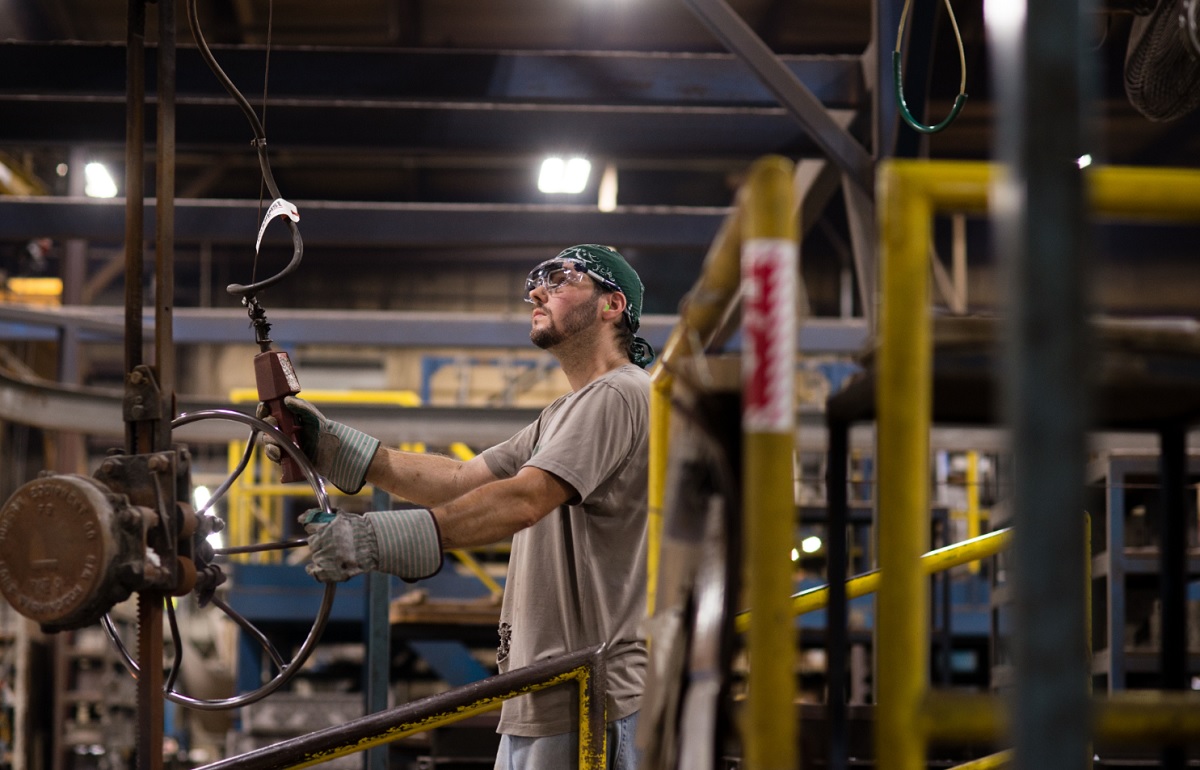
Tobii created its eye-tracking technology for controlling games and virtual reality applications. But it has since come up with another idea: tracking industrial manufacturing workers’ alertness in the name of safety.
Tobii’s research division, Tobii Insight Pro, is today releasing an eye-tracking study it performed at the metal foundry of H&H Castings, a maker of aluminum castings. By monitoring the eye movements of workers, H&H Castings found that it could train workers more quickly and uncover new efficiencies in its operations. It created new training guidelines and reported that it was able to reduce the risk of accidents.
“Eye-tracking certainly opened our eyes to the true impact that visual attention plays in a foundry,” said Jacob Hammill, system manager of H&H Castings, in a statement. “When you are working with molten metal, it’s difficult to get up close and observe how a task is being conducted. Eye-tracking can bridge that gap to give our new hires a whole new perspective on the process. Tobii Pro Insight identified unique visual skills that we can now build a training program around.”
The data from the attention study showed that foundry work requires an extreme amount of concentration and focus. Any sudden break in that concentration could have a disastrous effect on how workers poured liquid metal into casting molds. The eye trackers provided close-up supervision of how this process was conducted through the eyes of experienced workers.
The company now has videos it can show trainees. And analysis revealed steps that can be taken to make the whole metal-pouring process safer and more efficient.

Above: Tobii found that intense concentration is needed for manufacturing jobs.
“With the attention data, we were able to help H&H Castings understand behaviors that are intuitive to a skilled performer but difficult to articulate to the novice,” said Mike Bartels, senior research director at Tobii Pro Insight, in a statement. “We could also identify what is happening immediately before an error on the line occurs that would negatively impact efficiency.”
Asked if workers might feel they’re being spied on with eye-tracking technology, Bartels replied via email, “There’s no spying potential with the technology being used here. Eye-tracking requires configuration, calibration, and management for each recording. The person participating in an eye-tracking study is always fully aware of the process and is required to give their consent. In this context, the methodology’s only purpose is as a research and training tool — to transfer knowledge between workers, to identify risks in their work environment, to improve safety and instruction.”
The attention-based study revealed unique insights that will contribute to faster onboarding of new workers, new efficiencies in the foundry’s operations, new training guidelines, and a reduced risk of accidents.
Tobii looked at various factors that could improve performance and safety, such as adequate worker breaks. Interestingly, Tobii found that familiarity with the routine of the pouring process would sometimes lessen the visual concentration of the more experienced workers. An occasional refresher and adherence to proper procedures could help maintain awareness. And intense concentration limited workers’ situational awareness to potential hazards in their surrounding environment, underlining the need to keep a clutter-free workspace.
“We train a new employee or temp worker in the melt department twice a month, on average, as it’s one of the most demanding, and subsequently the most volatile position in the factory,” Hammill said. “Average training time is one full week, and we hope these insights and video will save us two days per employee. Ideally, this would save us 400 hours of training time per year in that department.”
The H&H Castings employees were recruited to participate in the study, and each wore Tobii Pro Glasses 2 wearable eye trackers for 15 minutes and 30 minutes. The eye trackers recorded their attention as they went about their normal tasks of creating aluminum castings in the foundry.
Source: Tobii says eye-tracking could improve manufacturing safety




